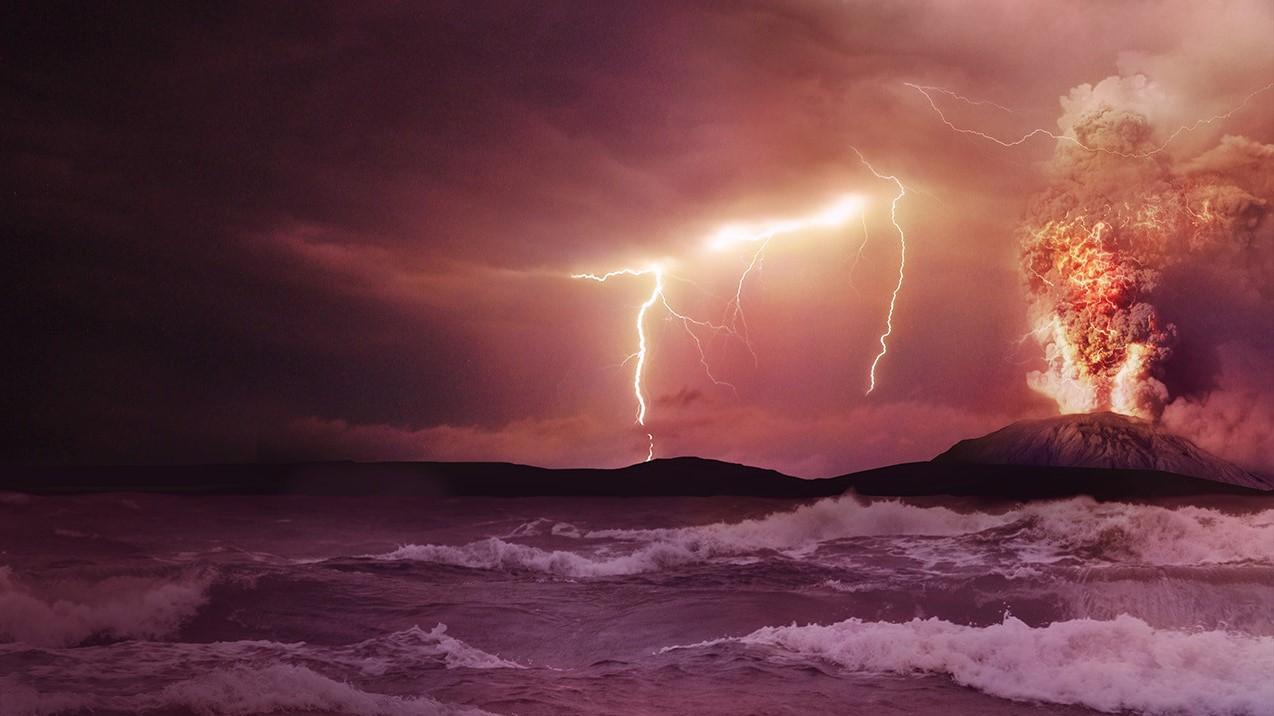
Submitted by Dr C.M. Martin-Jones on Wed, 21/09/2022 - 15:19
The problem of how phosphorus became a universal ingredient for life on Earth may have been solved by a group of Cambridge scientists, who have recreated primordial seawater containing the element in the lab.
Their results, published in the journal Nature Communications, show that seawater might be the missing source of phosphate, meaning that it could have been available on a large enough scale for life without requiring special environmental conditions.
“This could really change how we think about the environments in which life first originated,” said Professor Nick Tosca, from Cambridge’s Department of Earth Sciences, who was one of the authors of the study.
The study, which was led by Matthew Brady, a PhD student from Cambridge Earth Sciences, shows that early seawater could have held one thousand to ten thousand times more phosphate than previously estimated — as long as the water contained a lot of iron.
Phosphate is an essential ingredient in creating life’s building blocks — forming a key component of DNA and RNA — but it is one of the least abundant elements in the cosmos in relation to it’s biological importance. When in its mineral form, phosphate is also relatively inaccessible — it can be hard to dissolve in water so that life can use it.
Scientists have long suspected that phosphorus became part of biology early on, but they have only recently begun to recognize the role of phosphate in directing the synthesis of molecules required by life on Earth, “Experiments show it makes amazing things happen – chemists can synthesize crucial biomolecules if there is a lot of phosphate in solution,” said Tosca.
But the exact environment needed to produce phosphate has been a topic of discussion. Some studies have suggested that when iron is abundant then phosphate should actually be even less accessible to life. But, this is controversial because early Earth would have had an oxygen-poor atmosphere where iron would have been widespread.
To understand how life came to depend on phosphate, and the sort of environment that this element would have formed in, they carried out geochemical modelling to recreate early conditions on Earth.
“It’s exciting to see how simple experiments in a bottle can overturn our thinking about the conditions that were present on the early Earth,” said Brady.
In the lab, they made up a sea water with the same chemistry thought to have existed in Earth’s early history. They also ran their experiments in an atmosphere starved of oxygen, just like on ancient Earth.
The team’s results suggest that seawater itself could have been a major source of this essential element.
“This doesn’t necessarily mean that life on Earth started in sea water,” said Tosca, “It opens up a lot of possibilities for how seawater could have supplied phosphate to different environments— for instance, lakes, lagoons, or shorelines where sea spray could have carried the phosphate onto land.”
Previously scientists had come up with a range of ways of generating phosphate, some theories involving special environments such as acidic volcanic springs or alkaline lakes, and rare minerals found only in meteorites.
“We had a hunch that iron was key to phosphate solubility, but there just wasn’t enough data,” said Tosca. The idea for the team’s experiments came when they looked at waters that bathe sediments deposited in the modern Baltic Sea. “It is unusual because its high in both phosphate and iron — we started to wonder what was so different about those particular waters.”
In their experiments, the researchers added different amounts of iron to a range of synthetic seawater samples and tested how much phosphorous it could hold before crystals formed and minerals separated from the liquid. They then built these data points into a model that could predict how much phosphate ancient sea water could hold.
The Baltic Sea pore waters provided one set of modern samples they used to test their model with, “We could reproduce that unusual water chemistry perfectly,” said Tosca. From there they went on to explore the chemistry of sea water before any biology was around.
The results also have implications for scientists trying to understand the possibilities for life beyond Earth. “If iron helps put more phosphate in solution, then this could have relevance to early Mars,” said Tosca.
Evidence for water on ancient Mars is abundant, including old river beds and flood deposits, and we also know that there was a lot of iron at the surface and the atmosphere was at times oxygen-poor, said Tosca.
Their simulations of surface waters filtering through rocks on the Martian surface suggest that iron-rich water might have supplied phosphates in this environment too.
“It’s going to be fascinating to see how the community use our results to explore new, alternative pathways for the evolution of life on our planet and beyond,” said Brady.
Brady, M. P., Tostevin, R., & Tosca, N. J. (2022). Marine phosphate availability and the chemical origins of life on Earth. Nature communications, 13(1), 1-9.
